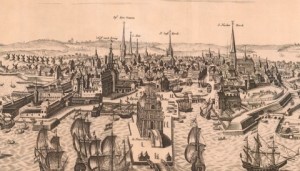As of 2014, Copenhagen has 15 Michelin-starred restaurants, the most of any Scandinavian city. The city is increasingly recognized internationally as a gourmet destination.These include Den Røde Cottage, Formel B Restaurant, Grønbech & Churchill, Søllerød Kro, Kadeau, Kiin Kiin (Denmark's first Michelin-starred Asian gourmet restaurant), the French restaurant Kong Hans Kælder, Relæ, Restaurant AOC, Noma (short for Danish: nordisk mad, English: Nordic food) with two Stars and Geranium with three. Noma, was ranked as the Best Restaurant in the World by Restaurant in 2010, 2011, 2012, and again in 2014,sparking interest in the New Nordic Cuisine.Apart from the selection of upmarket restaurants, Copenhagen offers a great variety of Danish, ethnic and experimental restaurants. It is possible to find modest eateries serving open sandwiches, known as smørrebrød – a traditional, Danish lunch dish; however, most restaurants serve international dishes. Danish pastry can be sampled from any of numerous bakeries found in all parts of the city. The Copenhagen Baker's Association dates back to the 1290s and Denmark's oldest confectioner's shop still operating, Conditori La Glace, was founded in 1870 in Skoubogade by Nicolaus Henningsen, a trained master baker from Flensburg. Copenhagen has long been associated with beer. Carlsberg beer has been brewed at the brewery's premises on the border between the Vesterbro and Valby districts since 1847 and has long been almost synonymous with Danish beer production. However, recent years have seen an explosive growth in the number of microbreweries so that Denmark today has more than 100 breweries, many of which are located in Copenhagen. Some like Nørrebro Bryghus also act as brewpubs where it is also possible to eat on the premises



